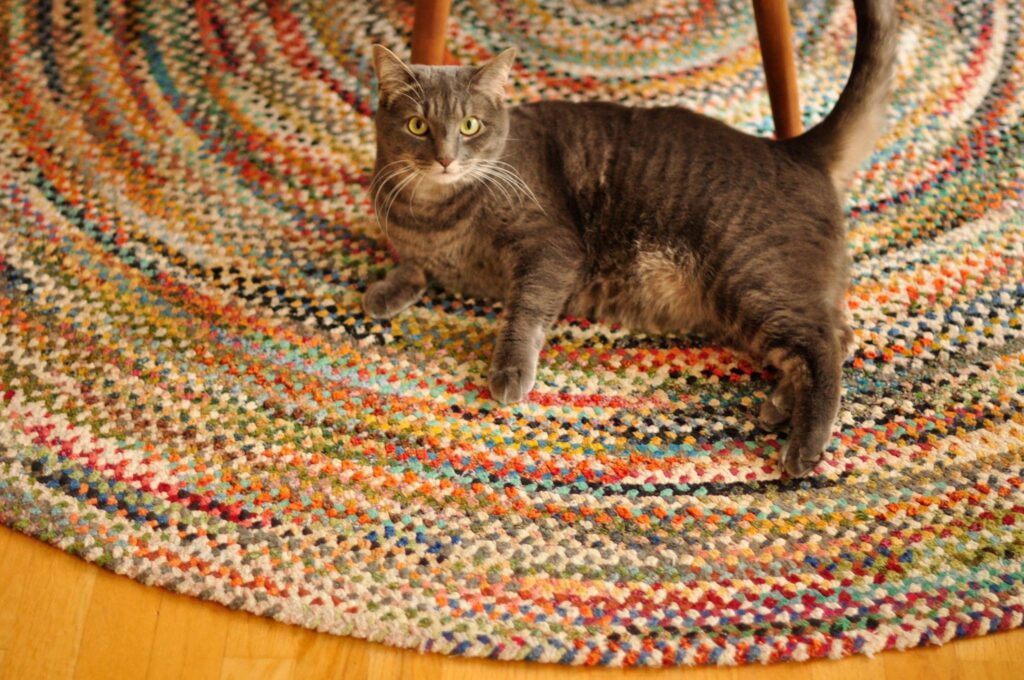Have you ever wondered where braided rugs come from? This is a fabric art with a uniquely American history, but braided rugs can be made or adapted to complement many different styles of decor. Let’s talk about their history and construction.
You may know the story of Plymouth Rock, but the actual circumstances of the “Pilgrims” who came to settle in what was eventually Massachusetts is rather complicated. They didn’t intend to travel there; their ship was headed for more southern climes closer to Jamestown, and it got lost in the Atlantic and then redirected because of the onset of winter and harsher conditions at sea. Before everything was covered in snow, they had to choose a spot, and Plymouth was it. Unfortunately for them, they arrived in November, well past the time they could grow anything. To survive they ate corn they found in an empty Wampanoag village and hunted game.
The Massachusetts climate is much colder and snowier than the one they’d left behind in England, even though it’s further south. England has a moderate, maritime climate, but New England was intensely cold. In the beginning, the Pilgrims built and furnished their homes exactly like they had in England. It’s what they knew. Over time, however, they adapted to their new surroundings and made changes for comfort. This is how the braided rug came into being.
Cold floors, whether dirt or wood, take a toll on health, and this was long before the advent of central heating. A steady fire was their only heat source. A floor with a rug is warmer and insulated. The early settlers didn’t have large looms or flocks of sheep, but they were thrifty and inventive. They bought bolts of wool from England and made their clothes from it, and any scraps they had they used to make other things, like braided rugs.
Braided rugs are comparable to quilts in this way. The settlers who sewed them used the bits and pieces from other projects to make interesting patterns that were pleasing to the eye. The material they used had a number of wonderfully practical properties to use as a floor cover as well. Wool is warm and naturally repels water because of the lanolin the sheep produce, and even when damp, wool will still hold warmth. Dust mites dislike wool, and sparks from fire will most often smoulder and die when they land on wool. Wool is also mildew and stain resistant. It’s an excellent fabric for many purposes.
Because these rugs were both beautiful and practical, the settlers used them in their homes, their churches and public buildings – anywhere that could use some warmth and color. They also bartered rugs with the Wampanoag and other Indian tribes for tools and other goods. These rugs were hand sewn by women and were found throughout the colonies as a preferred rug choice in the homes of the working and middle class. With the Industrial Revolution and the advent of large looms other types of rugs eventually came into fashion, but braided rugs remain popular because they are still attractive and warm.
Braided rugs are all one piece and do not need to be bound, but like any other rug, they can be a slip hazard. Fortunately, Bond Products has what you need to keep your braided rugs safe and well maintained.


